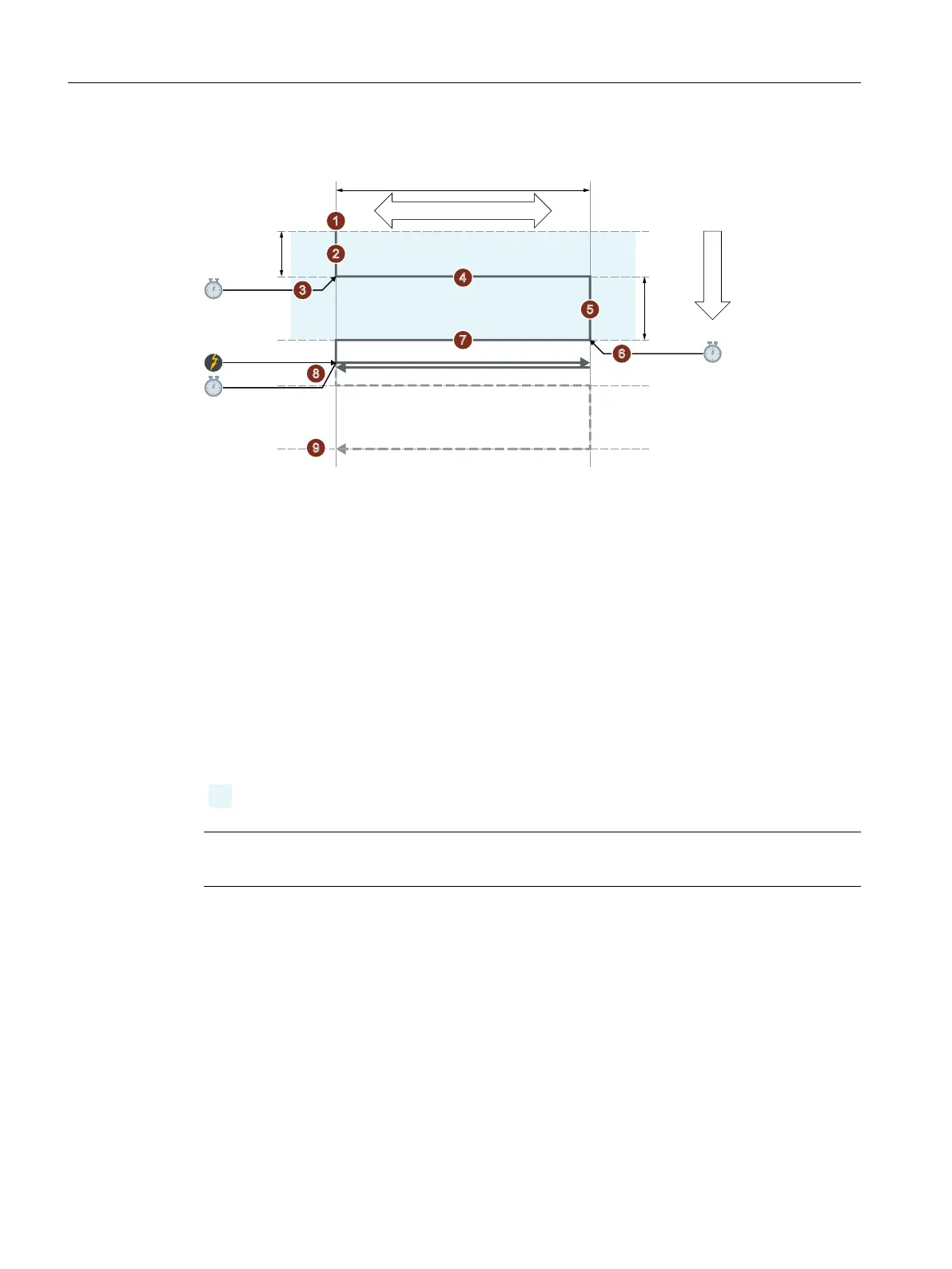Cancellation of the infeed at the start
6B$!
6B%!
6B:!
) 6B.!
) 6B,!
6B8!
6B8!
6B8!
6B*$8*(!
① Start of the cycle at the current position of the oscillating axis.
② Traversing of the infeed axis to the infeed depth at the start <S_A> with the feedrate for in‐
feed <S_I>.
③ Sparking out with the sparking-out time <S_U>.
④ Traversing of the oscillating axis with the grinding width <S_W> as travel path and the feedrate
for transverse infeed <S_K>.
⑤ Traversing of the infeed axis to the infeed depth at the end <S_B> with the feedrate for
infeed <S_I>.
⑥ Sparking out with the sparking-out time <S_U>.
⑦ Traversing of the oscillating axis with the grinding width <S_W> as travel path to the starting point
and the feedrate for transverse infeed <S_K>.
⑧ Cancel signal: The machining stops when the next start point is reached.
⑨ Without Cancel signal: The sequence is repeated until the programmed number of
repetitions <S_H> has been reached.
Indicates reiterating sequential steps.
Note
The sequence cannot be interrupted with a single block.
Resources
As resources, the cycle uses a block-wide synchronized action and a synchronized action
variable. The synchronized action is determined dynamically from the free area of the
synchronized action range (CUS.DIR - 1 ..., CMA.DIR - 1000 ..., CST.DIR – 1199 ...).
SYG_IS[1] is used as the synchronized action variable.
Work preparation
3.25 Programming cycles externally
NC programming
1134 Programming Manual, 12/2019, 6FC5398-2EP40-0BA0

